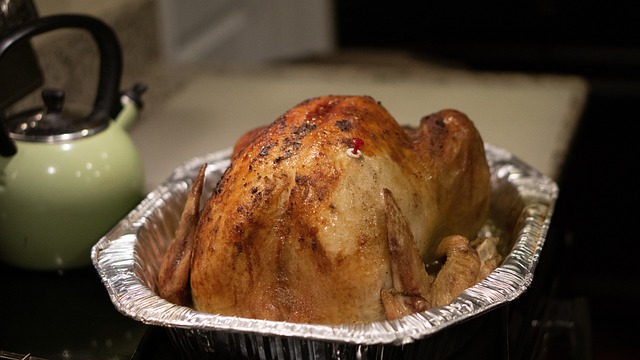Baking in the winter is great. The weather is cooler and the warming effects of the oven make baking so much more enjoyable. Baking in large batches is great for gift giving and even freezing to have throughout the winter. You can bake batches of food to have throughout the week when you’re running around and don’t have time to cook or for weekday breakfasts. Here are some tips for baking large batches of food in the winter.
How to Double Cake, Muffin, and Quick Bread Recipes
More is better when it comes to cake, muffins, and breads, right? Passing out the extras to your neighbor, bringing one to your next pot luck, or just having some on hand for when you’re craving something sweet but don’t have time to whip something up. Doubling these recipes isn’t just a matter of doubling everything, though, because they just don’t come out right when you do.
You need to calculate the use of baking soda and baking powder based on how much flour you use. So the rule of thumb is use 1-1¼ tsp of baking powder for every one cup of flour and/or ¼ tsp of baking soda for every one cup of flour. Watch out though: if you have another acidic ingredient like buttermilk or yogurt, then you’ll need to add an additional ¼–½ tsp of baking soda per cup of buttermilk, yogurt, or other acidic ingredient.
How to Double Cookies and Bars
All ingredients for cookies and bars can be doubled normally. However if you want a more cake-like cookie, then you should keep the baking soda and baking powder ratios in mind. Also, putting the dough in the refrigerator between batches will make for a thicker cookie that doesn’t spread as much when baking.
How to Double Breads and Rolls
The yeast used in breads and rolls makes these much easier to double. So just doubling the ingredients will work just fine. If you do go beyond doubling though and want to triple or quadruple the recipe, then weighing the ingredients instead of measuring by volume will work better. This will help keep the ratios consistent.
When doubling any of your baked recipes, just remember not to change the cooking time. You can either use two separate pans to cook in smaller batches, but ultimately you’ll have to use your eye to test the doneness of your baked goods. Do not double the time. And do not change the cooking temperature.
Now if you’re not going to give away your extra batches of baked goods and want to freeze them, here’s how.
How to Freeze Cakes, Muffins, and Quick Breads
• Place unfrosted cake in the freezer in a freezer bag, tightly sealed. When ready to use, remove from the freezer and let stand at room temperature for 1–2 hours. Then frost.
• For frosted cakes, place on parchment paper. Let frosting harden for about an hour. Now put it in a freezer bag. Remove from freezer 1–2 hours before you’re ready to serve to defrost.
• When freezing muffins and quick breads, make sure they are cooled completely. Place in a freezer bag or wrap in plastic wrap and then aluminum foil. When ready to use, remove from freezer and defrost at room temperature.
How to Freeze Cookies and Bars
• Cool cookies completely, then wrap individual cookies in plastic wrap. Place each cookie in a plastic freezer bag. Thaw at room temperature.
• For bars and brownies, cool completely. Do not cut individually. Wrap in plastic wrap and then in aluminum foil and freeze. Defrost at room temperature and then cut into bars.
How to Freeze Breads and Rolls
Simply place the bread and rolls in a freezer bag and seal tightly. When ready to use, defrost at room temperature. Or wrap in paper towel and defrost for 30 seconds in the microwave.
Now you’re ready to bake large batches of goods for the winter. You’re ready to share or save for a later date. What are your best tips for batch baking?
